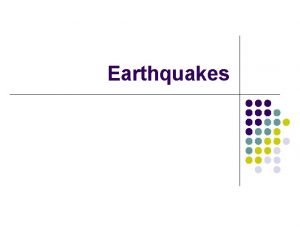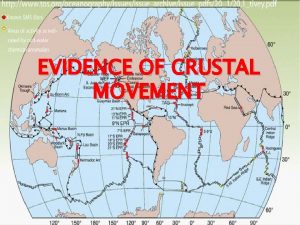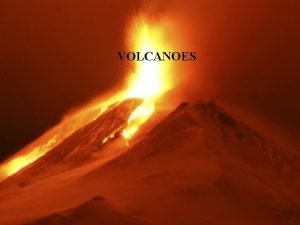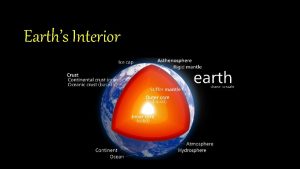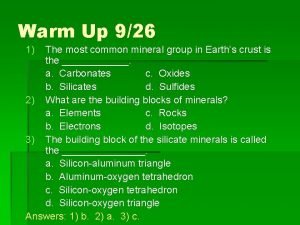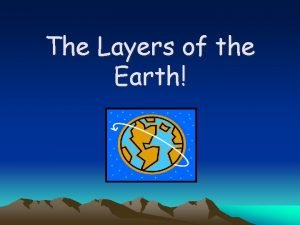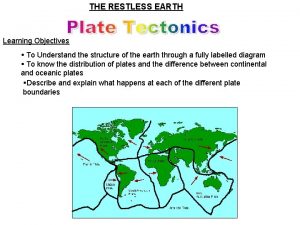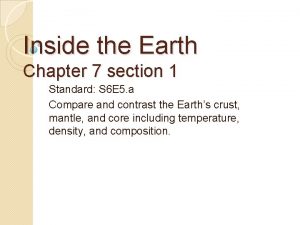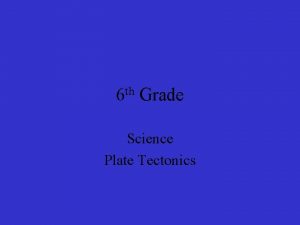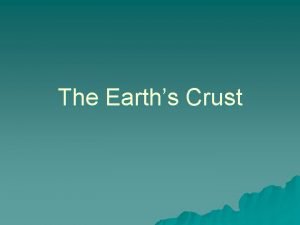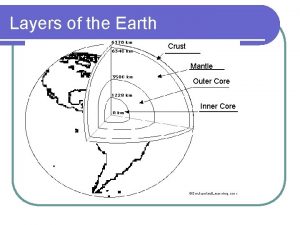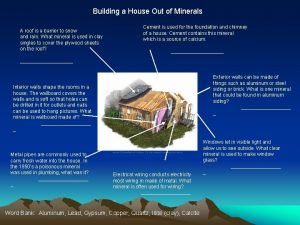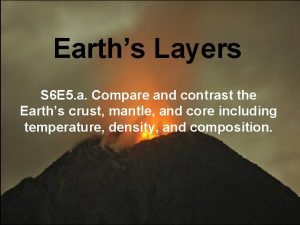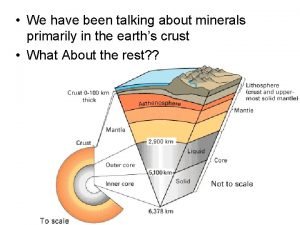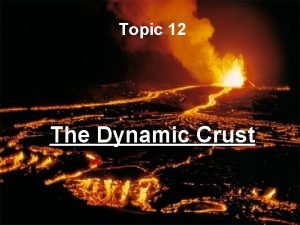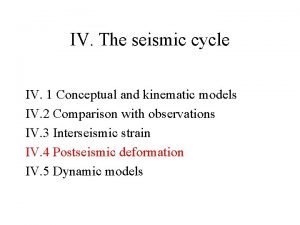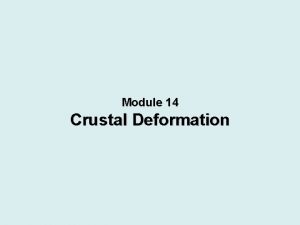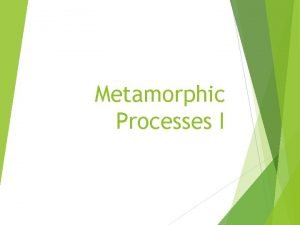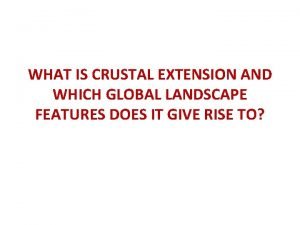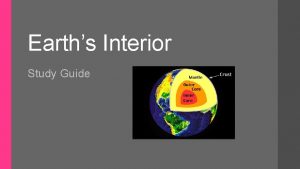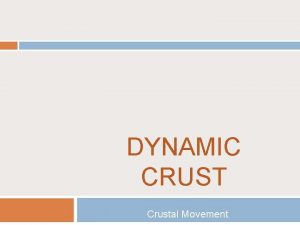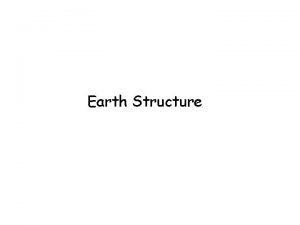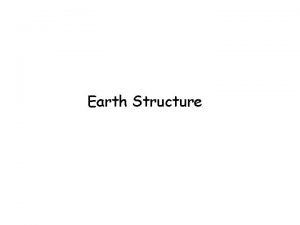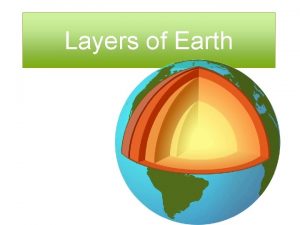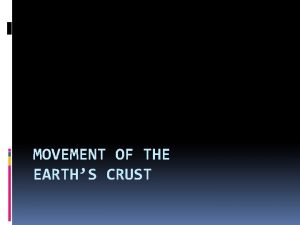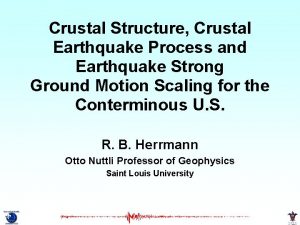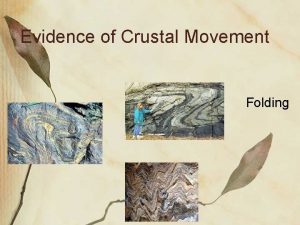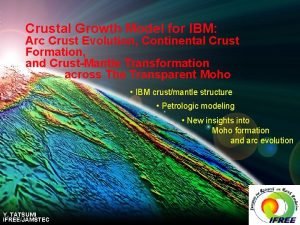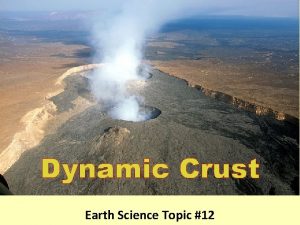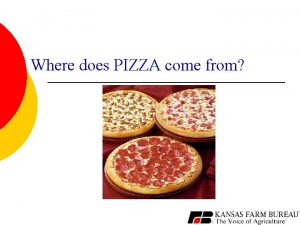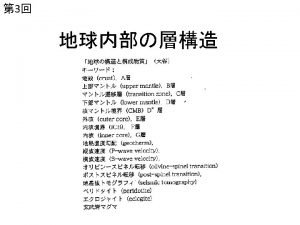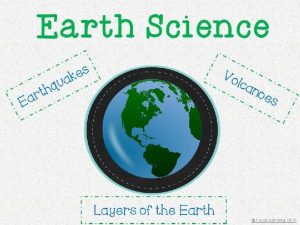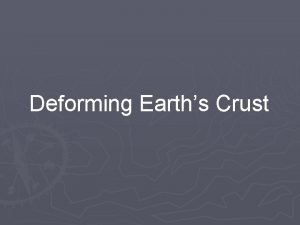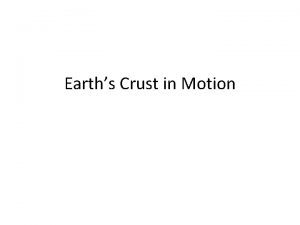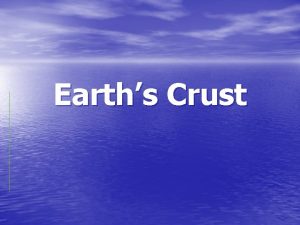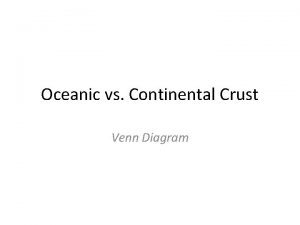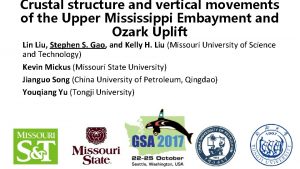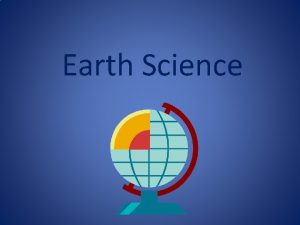EVIDENCE OF CRUSTAL MOVEMENT Movements of Earth Crust






































- Slides: 38

EVIDENCE OF CRUSTAL MOVEMENT

Movements of Earth Crust q. Our Earth’s crust go through major and minor changes every so often. q. Some of this changes are evident and observable. q. Others occur over very long periods of time such as Continental drifting.

Movements of Earth Crust Zones of crustal activities sometimes referred to as belts can be located on Earth surface. q Most earthquakes, volcanoes , sediments basins, mid –oceanic ridges, deep sea trenches and young continent mountain occur along these belts. q

Reference Table Page # 5

Where is the most action? Along the Pacific Belt, where the Pacific ocean meets land. Along the mid- oceanic Ridges. Along the belt that runs through Southern Europe, the Middle East and into Asia.

Mid- Oceanic Ridges

Mid- Oceanic Ridges

Continental Drift in 1910 , Alfred Wagener suggested that the coastlines of the continents on opposite sides of the Atlantic ocean could be fitted together like a puzzle. q q. This is referred to as the idea of continental drifting. This idea was later verified by similar fossils, minerals and rocks found on both coast lines. q

Inferred Position of the Earth Landmasses Refe renc e Tabl e pag e#9 #9


Evidence for Crustal Change? � Continental Fit – According to this idea, the continents where joined together at some point. Forces within the Earth have caused the plates to move apart. At this point they are still moving and will continue to move in the future. At the present time the plates are moving at a speed of 2 -10 cm per year!!!!

Evidence for Crustal Change? � Evidence of common rocks , minerals and Fossils found on both sides to the Atlantic Ocean.

Plate Tectonics � � This theory proposed that the Earth is divided into a number of large plates. Some plates consist of just oceans while others carry continental and oceanic crusts. This plates are made of the crust and the rigid mantle ( the moho) also called the Lithosphere. The plates move , separating , colliding and sometimes sliding past one another.

3 2 1 5 8 6 1 4 9 7

How do plates move? � So where is all this heat and energy comes from ? � Think back to the structure of the interior of the Earth and its various temperature!!!

Plates Boundaries There are 3 basic types of plate interactions or movements : 1. Divergent plates � 2. Convergent Plates 3. Transform Plates

Types of Plate Boundaries � � � Convergent Divergent Transform

Diverging Boundaries When n two plates move apart from each other. q q. They form midoceanic ridges and rift valleys


Convergent Boundaries Occur when two plates move toward each other. q q. There are two types of convergent boundaries : 1. Collision Boundaries - When two Ocean plates collide. The Himalayan mountains are though to be formed this way. 2. Subduction Boundaries - when an ocean and a continental plate collide.


Transform Boundaries When one plate slides horizontally past another along a single fault. q The San Andre Fault is an example of this boundaries q


Geosynclines – When two plates collide, rocks on the surface of the Earth , which are usually sedimentary fall to the bottom and push against each other, uplifting and forming mountains



Crustal Composition The oceanic crust and the continental crust have different composition. q q. The oceanic crust is composed of high density rocks such as basalt. These rocks are rich in Iron and Magnesium. q. The continental crust is composed of low density rocks such as granite, which are rich in aluminum.

Magnetic Poles The Earth has a magnetic field around. q q. This is because the Inner core with is solid and composed of Iron and nickel act a giant Magnet. q. Due to plates movements, the Earth magnetic poles have been move through its history.

Convection Currents Process responsible for moving Plates Heat rising and falling

INDIRECT EVIDENCE OF CHANGE Sedimentary rock and lava flows (igneous rock) form in horizontal layers or STRATA This is known as ORIGINAL HORIZONTALITY

1. DEFORMED STRATA- Strata that no longer shows original horizontality a) TILTED b) FOLDED

c) FAULTING- crack in a mass of rock where there has been movement.

Additional Crustal Changes Exposed rocks or strata also show proof of crustal changes. q q. Sedimentary rocks normally formed in horizontal layers or strata. q. When the strata is not horizontally, that provides evidence for crustal changes. q. The most common are tilting, folding and faulting.

Faults A crack or a zone of weakness in the Earth. Movements along the faults are called earthquakes.




 Strike slip fault
Strike slip fault Diastrophism
Diastrophism Volcano formation
Volcano formation Most abundant element on earth
Most abundant element on earth Earth interior
Earth interior Most abundant minerals in earth's crust
Most abundant minerals in earth's crust Physical layers of the earth
Physical layers of the earth Layer of earth between the crust and the core *
Layer of earth between the crust and the core * The crust of the earth is unstable and restless
The crust of the earth is unstable and restless The upfolds of the earth's crust are called
The upfolds of the earth's crust are called Chapter 7 section 1 inside the earth answer key
Chapter 7 section 1 inside the earth answer key Breaks in earth's crust where rocks slipped past each other
Breaks in earth's crust where rocks slipped past each other Vibrations on the earth's crust
Vibrations on the earth's crust Earth crust
Earth crust 10 most abundant elements in the earth's crust
10 most abundant elements in the earth's crust What are plutons that cause overlying rocks to bow upward
What are plutons that cause overlying rocks to bow upward Earth crust thickness
Earth crust thickness Lithosphere
Lithosphere Is the earth's crust solid
Is the earth's crust solid Topic 12 earth's dynamic crust and interior
Topic 12 earth's dynamic crust and interior Dance locomotor movements
Dance locomotor movements Crustal deformation
Crustal deformation Earths major crustal plates
Earths major crustal plates Deformation
Deformation Crustal deformation
Crustal deformation Crustal extension
Crustal extension The absence of evidence is not the evidence of absence
The absence of evidence is not the evidence of absence Class evidence vs individual evidence
Class evidence vs individual evidence Primary evidence vs secondary evidence
Primary evidence vs secondary evidence Secondary sources
Secondary sources Explain how class evidence may be useful.
Explain how class evidence may be useful. Primary evidence vs secondary evidence
Primary evidence vs secondary evidence Primary evidence vs secondary evidence
Primary evidence vs secondary evidence A pair of latex gloves was found at a crime scene
A pair of latex gloves was found at a crime scene Fiber evidence can have probative value
Fiber evidence can have probative value Secondary sources
Secondary sources Movement vs non movement area
Movement vs non movement area How do geologists study direct evidence of earth's interior
How do geologists study direct evidence of earth's interior Earth's layers foldable
Earth's layers foldable
